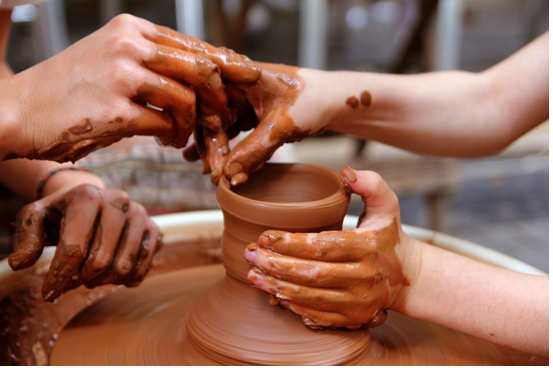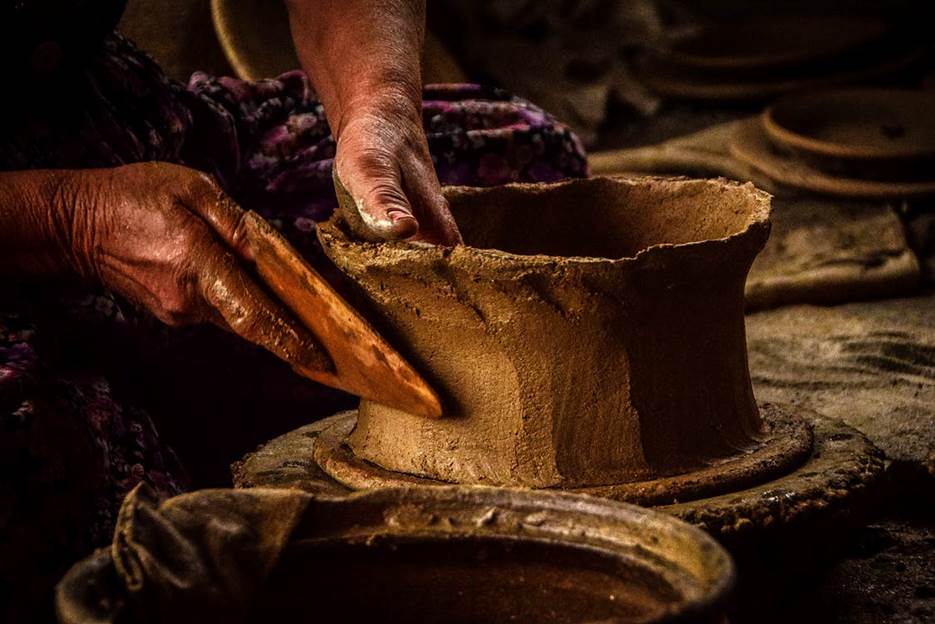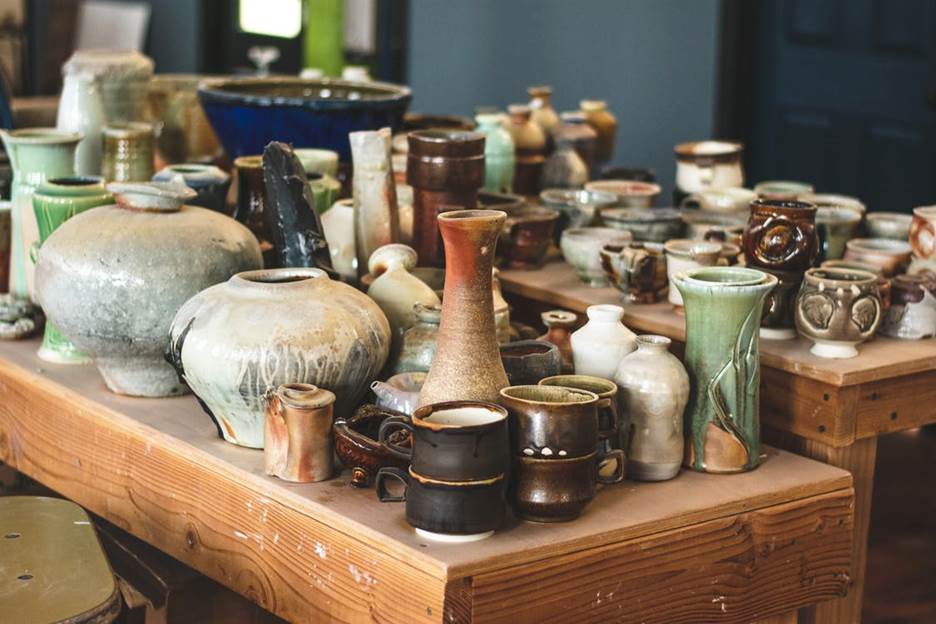The Different Types of Pottery Clay
The Different Types of Pottery Clay
Pottery is a great hobby to start but one area where of confusion can result is in picking the right clay. All the different types of clay can look the same to beginners and if you don’t choose the right type of clay, you can face a little disappointment.
Understanding the types of clay doesn’t just translate into better products – you will also have an easier time preparing the clay body (the clay mixture used to make pottery) and understand how to fire or cook the clay.
The Major Types of Pottery Clays
If you’re just starting out, you will find that there are three major kinds of clay that you can find the market. The following are some of the different types of pottery clays that you will come across:
1. Earthenware Clays – Low Fire – 1745oF to 2012oF (950oC to 1100oC)
Also known as common clay, earthenware is the most widely and easily available clay type you can find. It also happens to be one of the earliest clay types that were used by potters. They’re extremely easy to work with and have good elasticity to them.
However, earthenware clays can contain impurities like iron oxide, sand or even small stones. The mineral impurity in the clay contributes to its low firing temperature. After being fired, it might still be porous unless it is treated with a glaze.
Earthenware clays are naturally found in orange, brown, red, buff, white or medium grey. Based on the mineral content, the fired earthenware clay may have a different color.
2. Stoneware Clays – Mid Fire - 2150oF to 2260oF (1160oC to 1225oC)
A hardier clay type than earthenware, stoneware clay produces very durable and hard pottery pieces when they are fired. Stoneware tends to be coarse grain clay but unlike earthenware, when fired, it will produce an incredibly durable and non-porous result.
It has great elasticity and is largely grey in color when it is in its raw form. However, based on the mineral impurities it has, you can also find it in color variations of brown, light grey, buff or even tan. The impurities can also give you two types of stoneware pottery clay - mid-fire and high fire.
Mid fire stoneware clays have to be fired at 2150oF to 2260oF (1160oC to 1225oC) whereas high fire stoneware clays harden at 2200oF to 2336oF (1200oC to 1300oC). Stoneware clay is commonly used to make dishes, jugs, and other crock ware.
3. Ball Clays – Mid Fire – 2336oF (1300oC)
Ball clays are extremely elastic and can be molded and shaped for almost anything. This is a pure clay type that does not possess a lot of mineral impurities. They are easy to find in various colors such as dark grey but when fired, they will lighten to light grey or even light buff.
As a mid fire clay, this can be fired at 2336oF (1300oC) to harden it. The one major drawback with ball clays is that they are not very good when used on their own. The clay experiences a lot of shrinkage not only when drying but also in the firing process.
Due to this, it is better to add it to other clays. This helps to improve the elasticity and workability of other clay types. Their mineral purity also boosts the purity of other pottery clay types.
4. Fire Clays – High Fire – 2696oF (1500oC)
This type of clay can be hard to identify at first. This is because fire clay has many characteristics which can be confusing. However, it has one quality that is hard to overlook – its high firing point. Fire clays normally mature and harden when fired at temperatures of 2696oF (1500oC).
While it has few mineral impurities, fire clays can have visible iron spots or even a speckled appearance when they have been properly fired. Due to this, these clays are usually added to other pottery clays to give a unique or interesting appearance.
Fire clays are commonly added to stoneware clays to give a rougher texture to them. In some cases, they also increase the base temperature that stoneware matures at, turning it into a high fire clay type.
5. Kaolin Clays – High Fire - 3272oF (1800oC)
Called porcelain or China clay as well, this is one of the purest forms of clays that you can find. As compared to other clay types, it has fewer mineral impurities. It is widely used for making porcelain jars, décor items and more.
Kaolin also tends to be less elastic than other clays. It has a larger particle size, as compared to other clays. This means that if Kaolin is bent when it is being molded, it can easily tear. A certain level of care and skill is required to work with this clay.
It is available in light, pastel shades such as light grey, white or cream. Kaolin is a high fire clay and will harden at temperatures like 3272oF (1800oC). The end result is a product that is very durable, translucent and has a shiny and smooth surface, without the use of an additional glaze.
These are the major types of pottery clays that you can find in the market. Most beginners start with earthenware and work their way up as they grow more skilled. However, if you like a challenge, take your pick and get started today!




